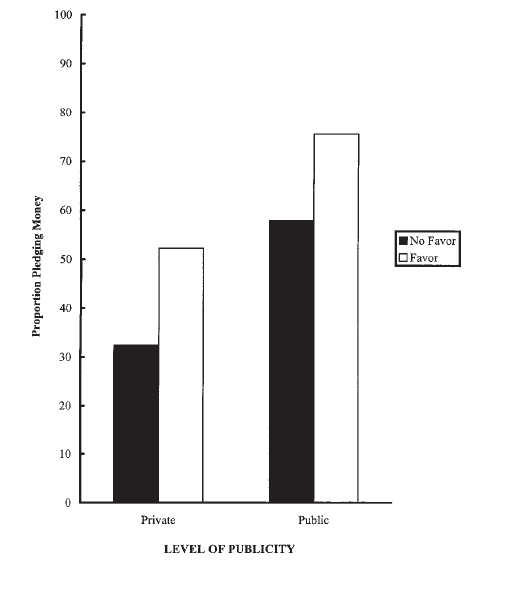Reciprocity is an
extremely powerful tool in compliance, but why? Most people assume that it is
because, as humans, we do not like to be met with social disapproval (Wedekind
& Milinski, 2000), but is this the only reason? How much of the compliance
is due to an internal struggle?
Whatley, Webster, Smith
and Rhodes (1999) conducted an experiment on whether compliance would change if
the act was private or public. The participant met a confederate posing as
another participant whilst waiting to take part in a study. They then got
called in to take part in what they thought was the study (rating pieces of
art), that had a 3 minute break half way through. During the break, half of the
participants were given a packet of M&M’s by the confederate (favour
condition) while the other half were given nothing (non-favour condition). When
participants thought they had completed the study, the experimenter returned
with a donation form for a sponsored run saying that the confederate had given
it to them to pass on to the participant. Half of the subjects were given a
form that asked for their name and address (the public condition) while the
other half were given an anonymous form on which to put their pledge (private
condition).
The results replicated
previous findings that if you receive an unsolicited favour you are more likely
to comply with subsequent requests from that person. The main finding of this
study is that this appears to be true regardless of whether the compliance is public
or private.
The study suggests that it is not only social motivation
that makes reciprocity such a powerful compliance technique; internal motivations
also play a part. However you can see from the graph the public condition were
on average more likely to pledge, which was expected.
References
Wedekind, C., &
Milinski, M. (2000). Cooperation through image scoring in humans. Science, 288(5467),
850-852.
Whatley, M. A., Webster,
J. M., Smith, R. H., & Rhodes, A. (1999). The effect of a favour on public
and private compliance: How internalized is the norm of reciprocity? Basic
and Applied Social Psychology, 21(3), 251-259.


Very good.
ReplyDelete